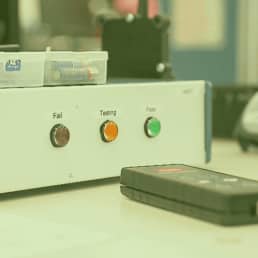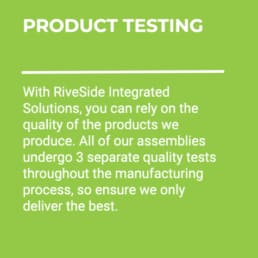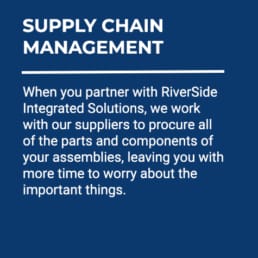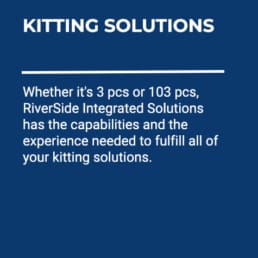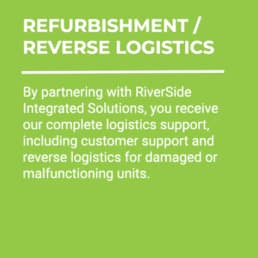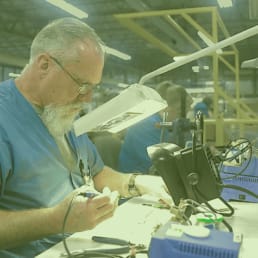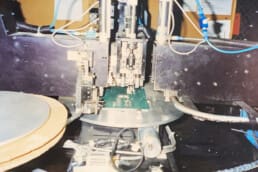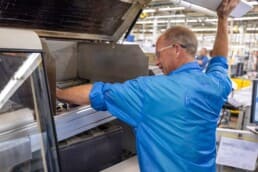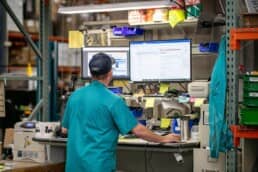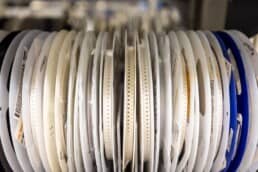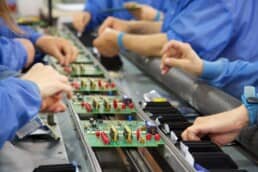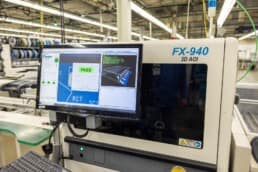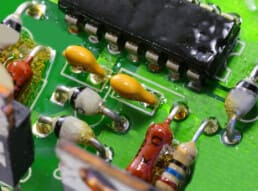How Does the PCB Assembly Process Work?
A Printed Circuit Board (PCB) is inside every electronic device. PCBs are the foundation to which various small electrical components are attached. The process of mounting components to a PCB and then inspecting and testing it is PCB Assembly or PCBA.
Electronic technologies continue to advance while the demand for more functionality increases. Because of this, PCBs and components are getting smaller and more complex. At the same time, PCB assembly has become an even more crucial step in electronics manufacturing. Even a small assembly error could lead to poor performance or failure of an electronic device in the field.
Given the criticality of this step, it is important that original equipment manufacturers (OEMs) partner with a knowledgeable company.
RiverSide Integrated Solutions (RIS) has become an expert in PCBA over our nearly 40 years in the business. As a contract manufacturer, RIS has the requisite experience and proven processes to guide OEMs through the PCBA process.
We help our customers select the right assembly technologies to ensure success in the field.
PCB ASSEMBLY TECHNOLOGIES
Many different techniques have been developed throughout the years for joining components to PCBs. Some are more automated than others. The two primary techniques we used at RIS are surface mount and through-hole.
SURFACE MOUNT TECHNOLOGY
As the name implies, surface mount technology (SMT) attaches components directly to the surface of the PCB. A specialized solder paste is used to mount the pieces. SMT is the most widely utilized system for PCBA. It does not require any holes in the board.
With this method, components to be mounted to both sides of the board. It allows for more components on a given board and smaller PCBs than other methods.
Check out our other blog posts, for more information on the SMT system at RIS!
THROUGH-HOLE TECHNOLOGY
Through-hole technology (THT) runs component leads through pre-drilled holes in the board. This method is an older style of assembling PCBs and is less popular than SMT. Still, it is known for its reliability and strong connections. In some cases, this means a PCB can endure more vibration and stress than boards assembled with SMT.
HOW DOES THE PCB ASSEMBLY PROCESS WORK?
The steps and sequencing involved in the PCBA process may vary slightly depending on the technologies used. However, the following describes the key elements of any PCBA process.
1. APPLY SOLDER PASTE
The first step in PCBA is to apply the solder paste to the PCB where components will be mounted. The paste used is a mixture of solder and flux. This permanently joins the parts to the board in future steps.
Many PCB assemblies use a stencil to guide the solder paste. This ensures it’s delivered to the correct board areas and in the proper amount.
At RIS, we design our stencils specific for each PCBA we manufacture. This helps make this step as efficient as possible.
2. PLACE THE COMPONENTS
The next phase is to place the necessary components on top of the solder paste. This step is referred to in the industry as “pick-and-place.”
Depending on the functionality of the PCB, there are many different types of components. The most common are resistors, capacitors, inductors and sensors. This step can be performed manually or with automation.
Still, either way, the correct components must be placed in the specified location on the board.
3. SOLDERING
The soldering step permanently bonds the components to the PCB. During this phase, SMT PCBA processes typically utilize a reflow oven and conveyor system. The reflow oven melts the solder paste while the conveyor moves the boards through.
With THT, the component leads go through the existing holes and are attached on the opposite side. For this style of PCB, manufacturers commonly use a wave soldering method. This soldering method uses a wave of molten solder to bind the boards. The solder flows across the bottom of the board, securing the components in place.
In both cases, the molten solder joins the components and leads to the board. The assembly is cooled afterward to solidify the solder and fix the pieces in place.
4. INSPECT THE ASSEMBLY
This phase of the PCBA assembly process is crucial. Inspection is necessary to confirm the previous steps. This stage may entail manual, automated and x-ray technology to help increase inspection efficiency.
5. TESTING
The final step in the PCB assembly process is testing to ensure the PCB functions as designed.
There are various test methods, such as flying probes, in-circuit testing and others. We explore the different testing techniques utilized in PCBA at RIS in our PCBA testing deep dive.
Once the PCBA is through testing, the component assembly process is complete.
RIS PCBA EXPERTISE
At RIS, PCB assembly is one of our core competencies. We provide reliable, seamlessly-assembled printed circuit board systems built with extreme precision.
Our skilled engineers, technicians and assemblers work to expertly put together a complete PCBA. When you choose RIS, you can expect the hands-on customer care of a small operation with the capabilities characteristic of a larger company. We provide our complete electronics manufacturing services for OEMs in any industry.
Our electronics assembly expertise includes:
- Surface Mount Technology (Fine-pitch, BGA (1 mm), µBGA (.4 mm), 01005, X-Ray, automated rework, and automated optical inspection (AOI)
- Magazine to Magazine handling
- Smart Shelving floor stock inventory control
- X-ray reel counting
- Lead-through auto-insertion (Axial, Radial, DIP, and Zierick Terminals)
- Wave Solder and Selective Solder Machines (No-clean & aqueous flux processes) RoHS and Tin/Lead capabilities
- Special Application Equipment (Cobot dispensing systems)
- Conformal coating (Silicone, Urethane)
- Potting (Epoxy, Urethane, and Silicone)
- Low-pressure molding technology
- Comprehensive product testing
- 3D Printing
About RiverSide Integrated Solutions
RIS is an advanced contract manufacturer providing robust solutions in circuit board assembly and product assembly. We employ more than 350 people and provide services to OEMs worldwide. We operate two state-of-the-art manufacturing facilities within the US.
With all of the choices in contract manufacturers out there, we know it can be challenging to find someone who understands your business model and has your best intentions in mind. RIS has always proven to be a win-win-focused relationship.
As your one-stop shop, we have the capabilities, capacity, quality assurance standards and resources to support all of your manufacturing needs. We understand that supply chain management is complex and very time-consuming, so we urge our customers to utilize us in the fullest capacity.
Our total-package solutions include:
- Extensive supply-chain network
- Full box-build assembly
- Dedicated Program Team
- Warehousing, kitting and drop-shipping capabilities
- Reverse logistics
- Flexible order fulfillment
- Scalability to meet your needs
Contact us today at (507) 523-3220 to see how we can help with your manufacturing project, or click contact us for a quote.



